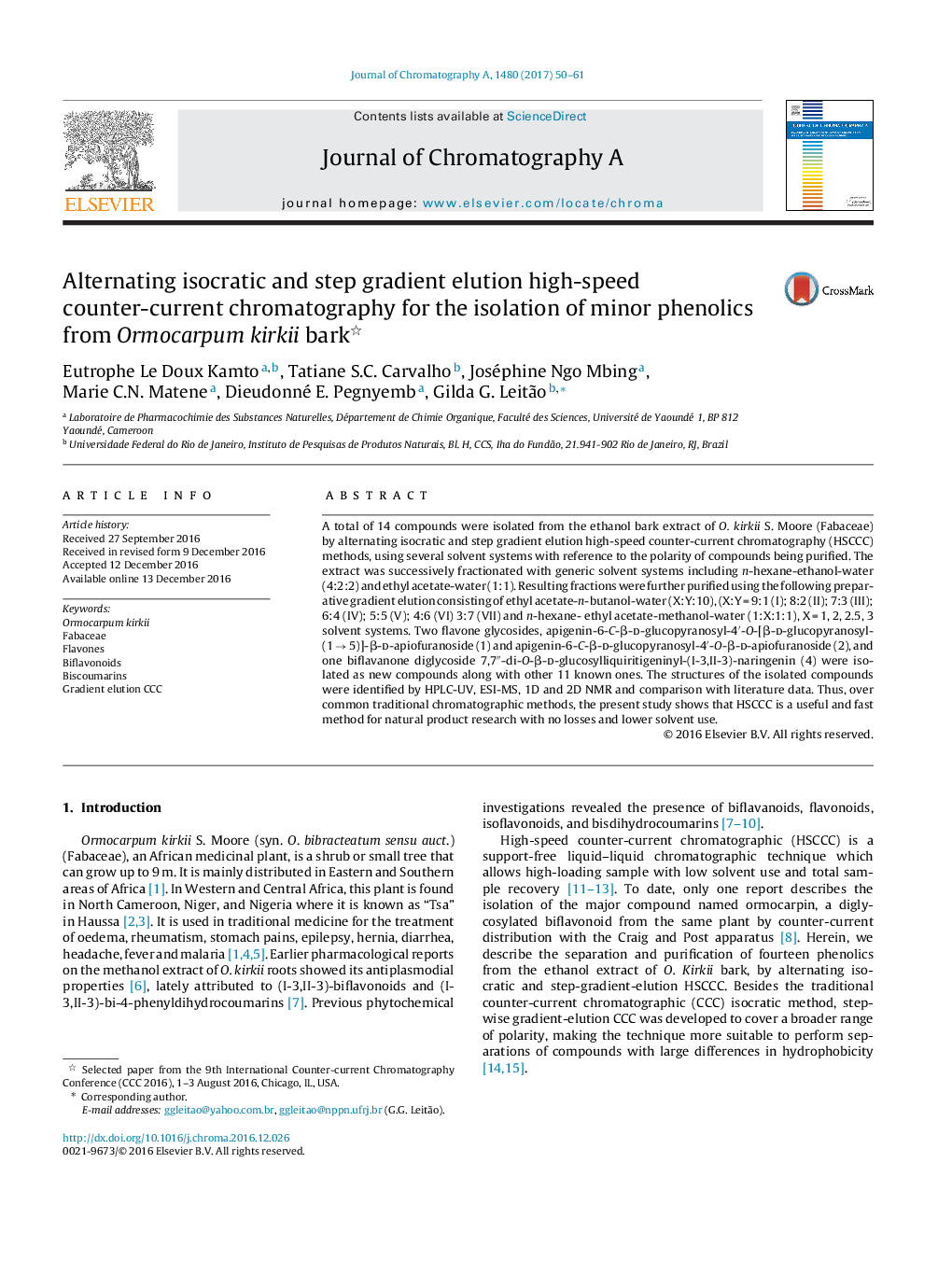| Article ID | Journal | Published Year | Pages | File Type |
|---|---|---|---|---|
| 5135847 | Journal of Chromatography A | 2017 | 12 Pages |
â¢Two new flavones and one biflavanone glycosides were isolated from Ormocarpum kirkii by HSCCC.â¢Application of several solvent systems afforded 14 compounds with different polarities.â¢Structures of compounds were identified by HPLC-UV, ESI-MS, 1D and 2D NMR.â¢The present study shows that HSCCC is a useful and fast method for natural product isolation.
A total of 14 compounds were isolated from the ethanol bark extract of O. kirkii S. Moore (Fabaceae) by alternating isocratic and step gradient elution high-speed counter-current chromatography (HSCCC) methods, using several solvent systems with reference to the polarity of compounds being purified. The extract was successively fractionated with generic solvent systems including n-hexane-ethanol-water (4:2:2) and ethyl acetate-water (1:1). Resulting fractions were further purified using the following preparative gradient elution consisting of ethyl acetate-n-butanol-water (X:Y:10), (X:Y = 9:1 (I); 8:2 (II); 7:3 (III); 6:4 (IV); 5:5 (V); 4:6 (VI) 3:7 (VII) and n-hexane- ethyl acetate-methanol-water (1:X:1:1), X = 1, 2, 2.5, 3 solvent systems. Two flavone glycosides, apigenin-6-C-β-d-glucopyranosyl-4â²-O-[β-d-glucopyranosyl-(1 â 5)]-β-d-apiofuranoside (1) and apigenin-6-C-β-d-glucopyranosyl-4â²-O-β-d-apiofuranoside (2), and one biflavanone diglycoside 7,7â³-di-O-β-d-glucosylliquiritigeninyl-(I-3,II-3)-naringenin (4) were isolated as new compounds along with other 11 known ones. The structures of the isolated compounds were identified by HPLC-UV, ESI-MS, 1D and 2D NMR and comparison with literature data. Thus, over common traditional chromatographic methods, the present study shows that HSCCC is a useful and fast method for natural product research with no losses and lower solvent use.
